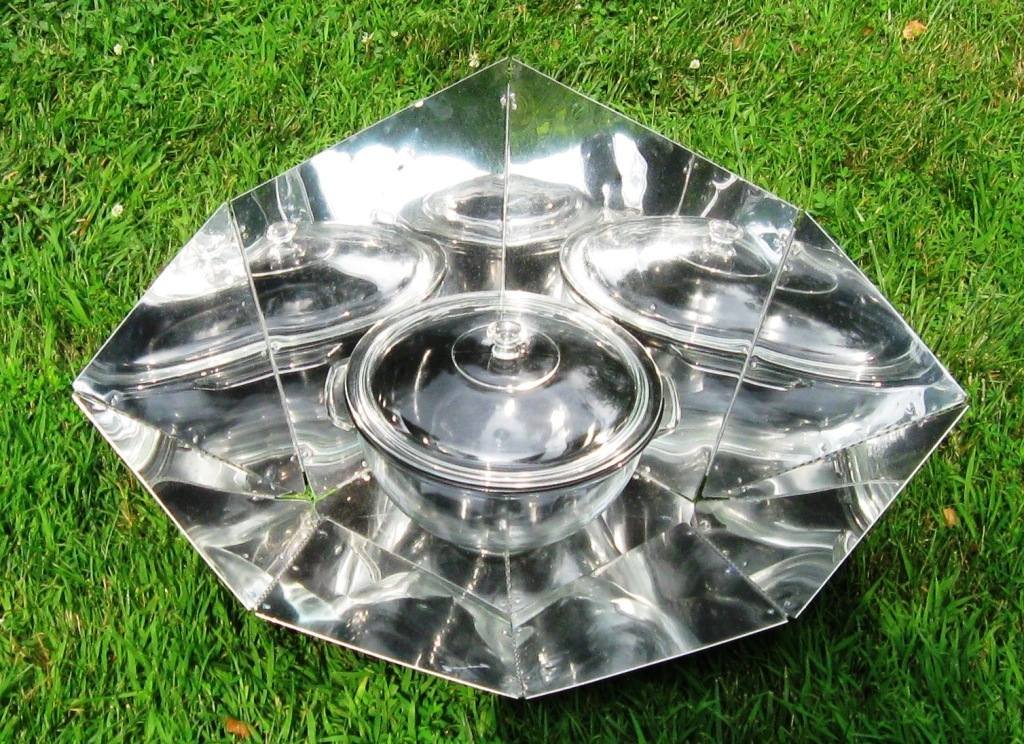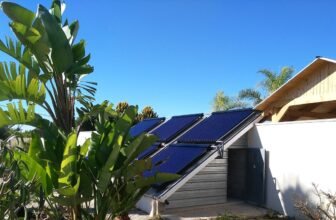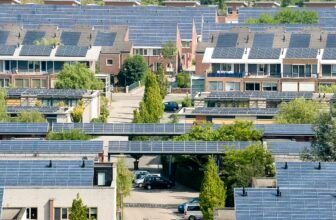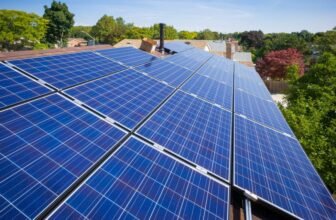
Cooking with the Sun: The Story and Science of Solar Cookers
In the dry heat of Rajasthan, India, a grandmother named Lakshmi stands beside her courtyard, carefully placing a pot of lentils inside a mirrored contraption. It’s not a conventional stove, nor does it hiss with the pressure of gas or buzz with electricity. Instead, it gleams under the noonday sun, capturing and concentrating its light into cooking power. This is her solar cooker, a tool that has transformed her daily life, saving money, reducing smoke, and keeping her kitchen cool. But can sunlight alone really cook your meals? Let’s dive into the fascinating world of solar cookers and uncover the science, practicality, and promise behind them.
What is a Solar Cooker?
A solar cooker is a device that harnesses sunlight to cook food. Instead of using gas, firewood, or electricity, it relies solely on solar energy, abundant, renewable, and free. The principle is simple: concentrate sunlight onto a cooking vessel to generate heat sufficient to cook food.
Solar cookers come in several types:
-
Box cookers: Resemble insulated boxes with a transparent lid that traps sunlight. Great for slow cooking, like baking or simmering.
-
Parabolic cookers: Use curved reflective surfaces (like satellite dishes) to focus sunlight to a central point, achieving high temperatures quickly. Ideal for frying or boiling.
-
Panel cookers: Combine elements of box and parabolic cookers using reflective panels around a pot enclosed in a clear plastic bag.
Each type varies in complexity, price, and efficiency, but all share the common goal of using the sun to cook food sustainably.
Do Solar Cookers Really Work?
Yes, solar cookers absolutely work, and not just in theory. In practice, people around the world, from rural African villages to American backyards, use them daily. Whether it’s stews in Kenya, rice in California, or tea in Tibet, solar cookers have proven effective across cultures and climates.
Their effectiveness, however, depends on several factors:
-
Sunlight intensity: Clear, sunny days yield the best results. Cloudy or rainy conditions reduce performance.
-
Time of day: Midday hours provide peak solar energy, making it ideal for cooking.
-
Altitude and season: Higher elevations and summer months generally provide more effective cooking conditions.
Studies and field trials have confirmed that solar cookers can reach temperatures from 120°C to 200°C (250°F to 400°F), enough to boil water, bake bread, cook meats, and even fry foods, depending on the model.
In disaster relief zones, refugee camps, and off-grid communities, solar cookers are used successfully to reduce reliance on firewood, which can be scarce, expensive, or hazardous to collect.
What is the Most Effective Solar Cooker?
The most effective solar cooker depends on your needs, speed, versatility, portability, or safety. However, parabolic solar cookers generally take the lead in terms of efficiency and cooking speed. Their mirror-like curved surfaces concentrate sunlight to a small focal point, generating temperatures that rival conventional stovetops.
Examples include:
-
The SolSource Classic: A durable, parabolic solar cooker that can boil water in under 10 minutes.
-
GoSun Fusion: A hybrid model that combines solar power with backup electric heating, allowing nighttime or cloudy-day cooking.
-
The Sun Oven: A box-style cooker popular in North America, capable of reaching 180°C (350°F), suitable for baking, roasting, and slow cooking.
If speed and high heat are your priorities, parabolic cookers are unmatched. But for safety (especially around children), ease of use, or baking, box-style or panel cookers might be preferable.
How Many Solar Panels Does It Take to Run a Cooker?
Interestingly, most solar cookers do not require any solar panels because they operate entirely through direct solar thermal energy, not electricity. They use mirrors, reflectors, or insulated containers to capture and convert sunlight into heat.
However, solar electric cookers, which mimic electric stoves but are powered by solar panels, are a different category. To power a standard electric cooker (around 1,000 to 2,000 watts), you’d need:
-
About 4 to 8 solar panels, assuming each panel produces around 250 watts.
-
A battery storage system to maintain operation during low-light periods.
-
A solar charge controller and an inverter to convert DC to AC power.
This setup can be expensive and complex. In contrast, traditional solar cookers are simpler, cheaper, and more sustainable since they bypass electricity altogether.
Can You Cook Normal Food in a Solar Cooker?
Absolutely. Solar cookers are incredibly versatile and can cook almost anything you would prepare on a regular stove or in an oven, including:
-
Rice, pasta, and grains
-
Soups, stews, and curries
-
Roasted vegetables
-
Bread, cakes, and cookies
-
Meat and fish (though it takes longer to cook than conventional methods)
-
Boiled eggs, tea, and coffee
What changes is cooking time and method, not the food itself. Solar cooking is more like slow cooking; meals take longer but require minimal supervision. You often “set it and forget it,” letting the sun do the work.
Here’s a sample cooking time in good sunlight:
-
Rice: 30–60 minutes
-
Vegetables: 45 minutes to 1 hour
-
Chicken thighs: 1.5 to 2 hours
-
Bread loaf: 1 to 1.5 hours
Pro tip: using dark, thin, and lidded pots enhances heat absorption and speeds up cooking.
Do Solar Ovens Work in the Winter?
Yes, but with caveats. Solar ovens can work in winter, provided there’s adequate sunshine. The ambient temperature isn’t the main concern; rather, it’s the intensity and angle of the sunlight.
In winter:
-
The sun is lower in the sky, so adjust the cooker’s angle accordingly.
-
Days are shorter, giving less cooking time.
-
Cold air can increase heat loss, so insulation matters more.
To maximize winter performance:
-
Use highly insulated cookers, like vacuum tube ovens (e.g., GoSun models).
-
Cook during midday hours, when the sun is strongest.
-
Choose recipes with shorter cooking times or prepare partially indoors.
While you may not fry eggs in January in northern Canada, you can certainly bake bread or stew beans on a clear winter day.
What is the Maintenance of a Solar Cooker?
One of the best features of solar cookers is their low maintenance. Unlike gas stoves or electric ovens, they have no moving parts, no fuel tanks, and no wiring. However, to keep them in optimal condition:
-
Clean reflectors regularly: Dust, grime, or fingerprints reduce reflectivity and heat concentration.
-
Inspect for wear and tear: Especially for portable units, check for cracks, loose parts, or damaged insulation.
-
Store properly: When not in use, cover or store the cooker to protect it from rain, snow, or UV damage.
-
Re-polish aluminum or steel surfaces occasionally if oxidation occurs.
-
Replace plastic bags or insulation sleeves in panel cookers as needed.
On average, a well-maintained solar cooker can last 10 to 20 years, making it a sustainable investment.
Does a Solar Cooker Use Electricity?
Traditional solar cookers do not use electricity at all. They operate purely on solar thermal energy, capturing heat, not generating or using electrical power.
However, hybrid models like the GoSun Fusion incorporate electric backup heating elements. These can run on:
-
Battery packs charged by solar panels
-
Standard AC electricity (wall outlet)
-
Car batteries or portable power stations
This hybrid approach allows you to cook even during cloudy days or at night, offering greater flexibility while still reducing overall energy use.
So, if you’re truly off-grid or want zero electrical dependence, go with a traditional solar cooker. If you want an all-weather solution, a hybrid may be worth considering.
The Promise of Solar Cooking
Back in Rajasthan, Lakshmi lifts the lid of her solar cooker, releasing a puff of fragrant steam. Her lentils are soft, seasoned, and ready, cooked without a match, without gas, without spending a single rupee on energy. Multiply this scene across millions of households, and you begin to understand the immense potential of solar cooking.
Not only does it cut down household energy costs, but it also:
-
Reduces deforestation from firewood collection.
-
Improves indoor air quality by eliminating smoke.
-
Empowers women and children by saving time and labor.
-
Lowers greenhouse gas emissions, contributing to climate goals.
As solar technology becomes more affordable and innovative, the solar cooker may well become a symbol of sustainability, marrying ancient sun-powered traditions with modern design.
So whether you’re a homesteader in Oregon, a student in Nairobi, or an eco-conscious urbanite in Berlin, the next time the sun’s shining, consider stepping outside and letting nature cook your meal. After all, with a solar cooker, the sky’s not the limit, it’s the fuel source.
Solar cookers are more than just gadgets, they represent a paradigm shift in how we think about cooking, energy, and sustainability. They prove that clean cooking isn’t just possible, it’s practical. Whether you’re looking to save money, reduce your carbon footprint, or simply explore an off-grid lifestyle, a solar cooker might just be the sun-powered solution you’ve been looking for.
So next time you’re basking in sunlight, remember: that glowing orb in the sky isn’t just for tanning, it’s the original chef.



